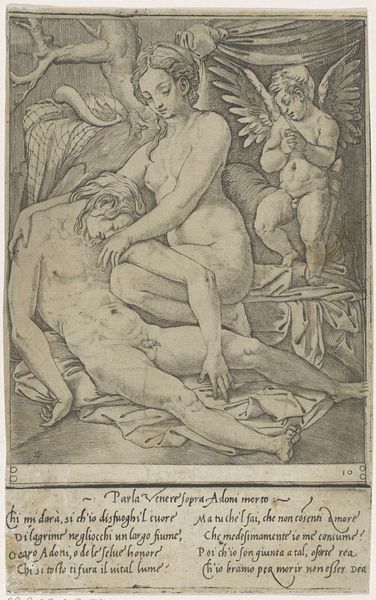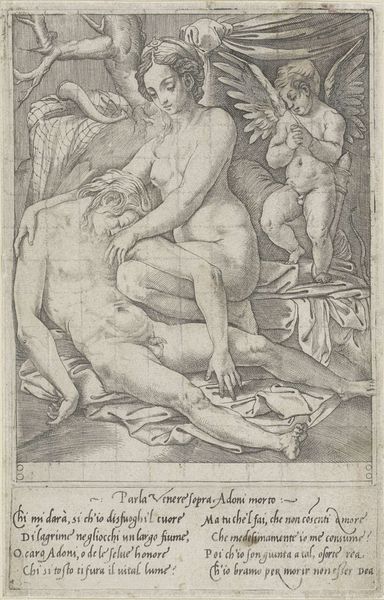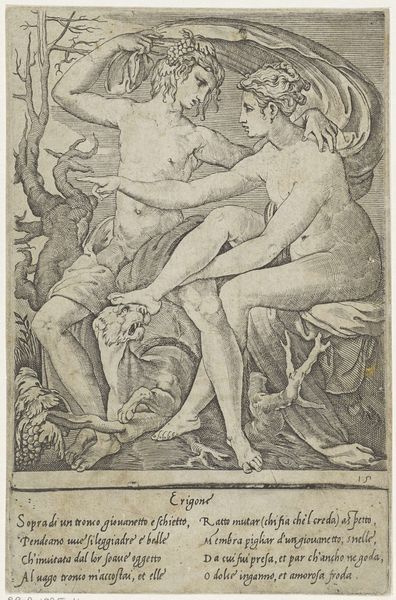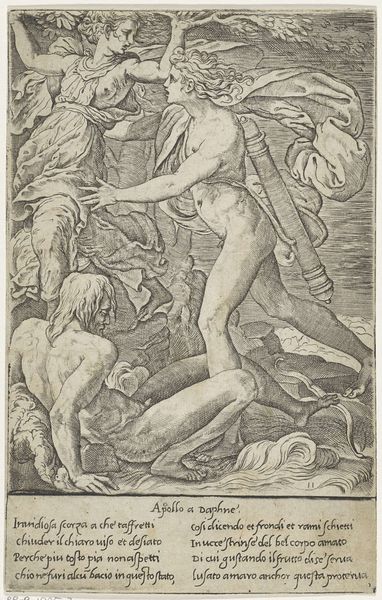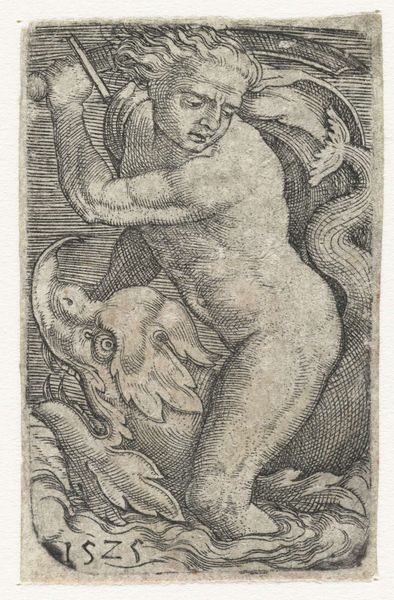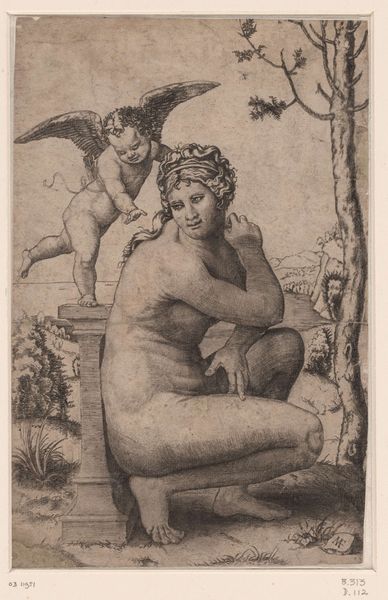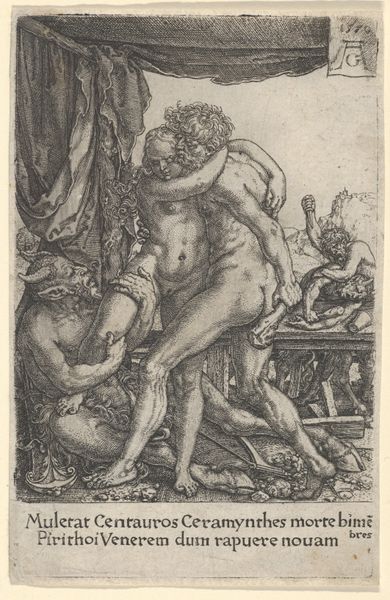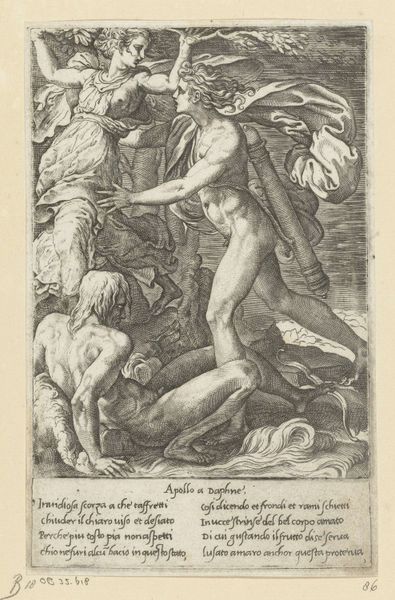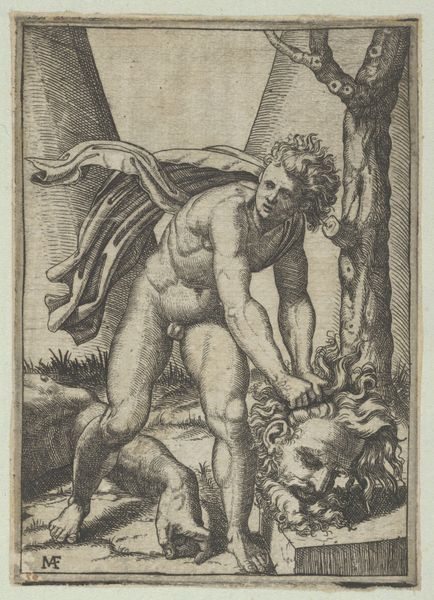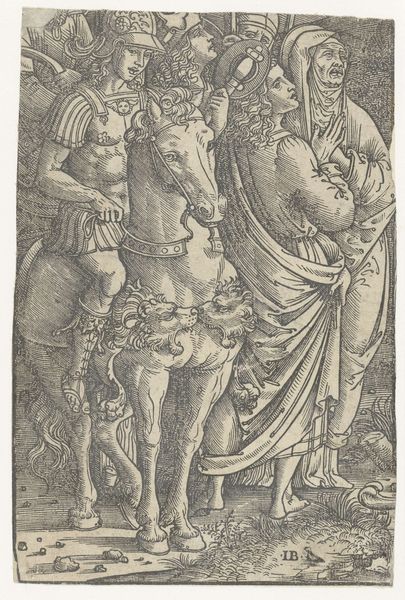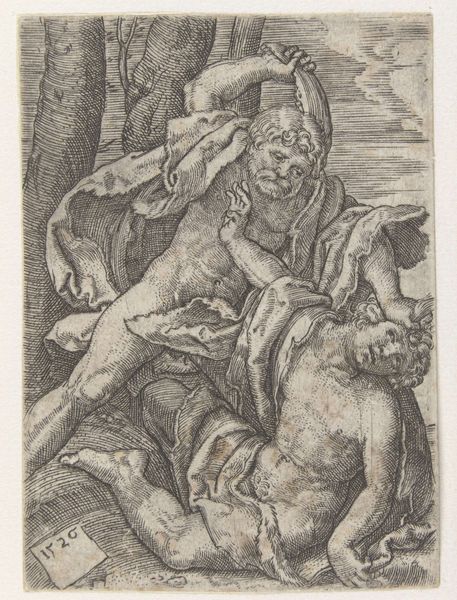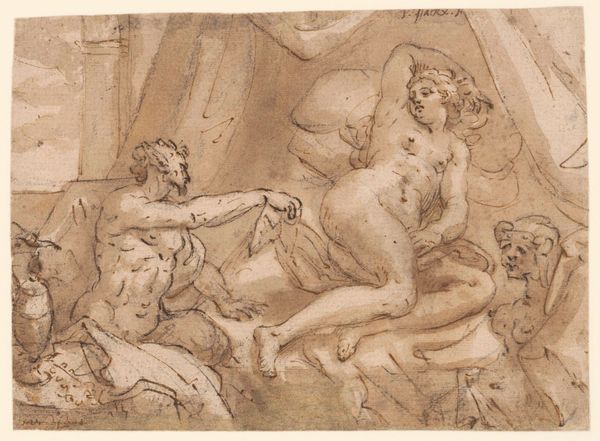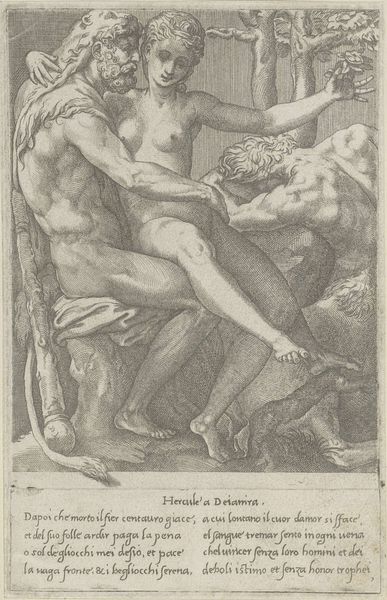
print, engraving
#
toned paper
#
light pencil work
#
allegory
# print
#
pen sketch
#
pencil sketch
#
figuration
#
form
#
personal sketchbook
#
ink drawing experimentation
#
pen-ink sketch
#
line
#
pen work
#
sketchbook drawing
#
italian-renaissance
#
nude
#
sketchbook art
#
engraving
Dimensions: height 137 mm, width 128 mm
Copyright: Rijks Museum: Open Domain
Curator: Let's discuss "Loves of the Gods", an engraving created between 1515 and 1565, and now residing at the Rijksmuseum. Editor: It’s immediately striking – the overt sensuality, the lines so delicately etched… There’s a fragility in the depiction that belies its title. Curator: The composition adheres to classic Renaissance principles: idealized forms, balanced arrangement. Consider the relationship between line and space, how the pen work models the figures and evokes dimension on a primarily tonal background. Editor: What tools would Caraglio, the artist, have utilized to achieve this remarkable detail? I'm picturing the engraver’s studio, the types of inks employed, the specific grade of toned paper chosen as a deliberate ground. The print *is* a sketch after all. What does this make the relationship of labor? Was this printed en masse? Curator: The mythological narrative depicted plays upon allegorical themes, but transcends its original context to examine enduring preoccupations with form and representation. The subjects—particularly the nudes—express Italian Renaissance ideals. Note the graceful poses and the elegant flow of drapery. Editor: Absolutely. How might our interpretation of these mythological figures evolve if we explored not just the symbolic, but also the physical processes by which these prints were circulated? Thinking about networks of commerce, how engravings like this served not just artistic, but distinctly material ends. Curator: Precisely. Viewing "Loves of the Gods" through varied lenses illuminates the multifaceted nature of art itself, don’t you think? Editor: Indeed. Appreciating both its artistic execution and its connection to the world of workshops, material production, is central to seeing the work as both a historical and a material artifact.
Comments
No comments
Be the first to comment and join the conversation on the ultimate creative platform.
